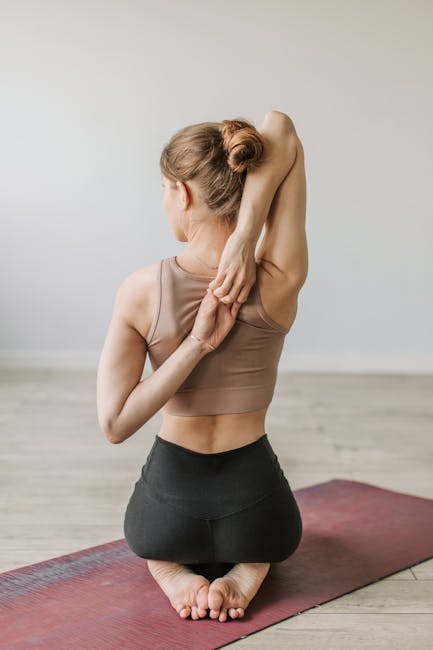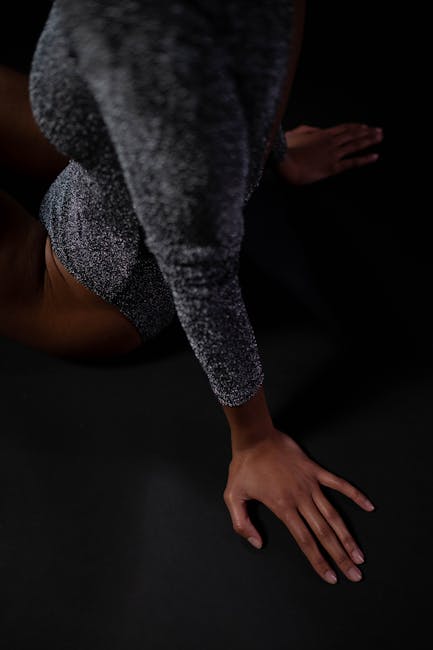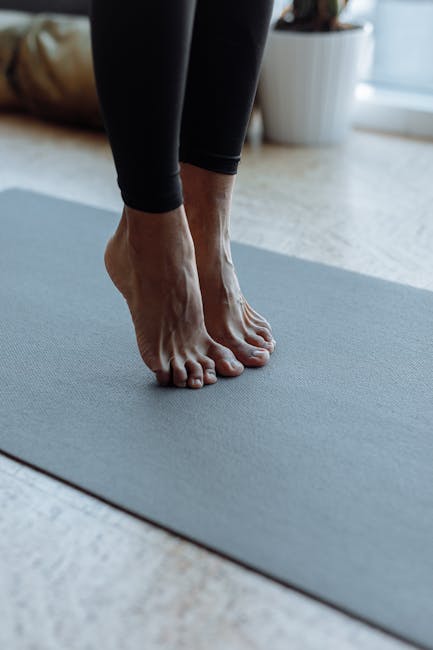What Are The Ways To Practice Mindful Movement In Daily Life?
Mindful movement is a simple yet powerful way to bring awareness into your daily life. It’s about moving your body with intention, paying attention to the present moment, and connecting with your breath. Whether you’re stretching, walking, or even cooking, mindful movement can transform ordinary activities into opportunities for peace and clarity.
If you’ve ever felt like life is rushing by or your mind is constantly racing, this practice can help you slow down and truly be in the moment. Keep reading to discover practical ways to incorporate mindful movement into your routine and unlock its benefits for your body and mind.
Key Takeaways
- Mindful movement combines physical activity with mindfulness to enhance well-being.
- Practices like yoga, stretching, and walking can be done mindfully.
- Everyday activities, such as cooking or hiking, can also become mindful practices.
- Mindful movement helps reduce stress, improve focus, and promote emotional resilience.
Introduction to Mindful Movement
Definition of Mindful Movement
Mindful movement is the practice of moving your body while staying fully present in the moment. It’s not about how fast or far you go but about how you move. This could mean focusing on your breath as you stretch or noticing the sensations in your feet as you walk.
Unlike traditional exercise, mindful movement isn’t about achieving a goal or burning calories. Instead, it’s about cultivating awareness and connecting with your body.
Importance of Incorporating Mindfulness into Daily Activities
Why does mindfulness matter? Because life can feel like a whirlwind. Between work, family, and endless to-do lists, it’s easy to go through the motions without truly experiencing anything.
Mindful movement helps you hit the pause button. It allows you to tune into your body, calm your mind, and find joy in the little things—like the rhythm of your breath or the feeling of sunlight on your skin.
Benefits of Mindful Movement for Physical and Mental Well-Being
The benefits of mindful movement are both physical and mental. It can improve flexibility, balance, and posture while reducing stress and anxiety.
Studies have shown that mindfulness practices can lower blood pressure, improve sleep, and even boost your immune system (source). Plus, mindful movement can help you feel more grounded and connected to yourself, which is especially valuable in today’s fast-paced world.

Simple Mindful Movement Practices
Yoga for Mindfulness
Yoga is one of the most popular ways to practice mindful movement. It combines physical poses with breathwork and meditation, making it a holistic practice for body and mind.
Gentle Yoga Flows for Relaxation
If you’re new to yoga, start with gentle flows like cat-cow or child’s pose. These movements are slow and soothing, perfect for unwinding after a long day.
Dynamic Yoga Sequences for Energy
For a burst of energy, try sun salutations or warrior poses. These dynamic sequences can invigorate your body while keeping your mind focused on the present moment.
Want to dive deeper into yoga and other mindful practices? Check out this guide on mindful movement through yoga and tai chi.
Stretching Routines
Stretching is another simple way to practice mindful movement. It’s easy to do and doesn’t require any special equipment.
Morning Stretches to Start the Day Mindfully
Begin your day with a few gentle stretches. Reach your arms overhead, roll your shoulders, and take a deep breath. Notice how your body feels as you wake up.
Evening Stretches to Prepare for Restful Sleep
Before bed, try stretches like forward folds or seated twists. These movements can help release tension and prepare your body for a good night’s sleep.

Mindful Movement in Everyday Activities
Cooking as a Mindful Practice
Cooking isn’t just about making food—it can also be a mindful activity.
Engaging the Senses While Preparing Meals
As you chop vegetables or stir a pot, pay attention to the colors, textures, and smells. Feel the knife in your hand or the warmth of the stove.
Savoring the Process of Creating Food
Instead of rushing through meal prep, savor the process. Let it be a time to connect with yourself and the ingredients you’re working with.
Walking with Mindfulness
Walking is something we do every day, but how often do we do it mindfully?
Synchronizing Breath with Steps
Try matching your breath to your steps. For example, inhale for four steps and exhale for four steps. This simple practice can turn an ordinary walk into a meditative experience.
Observing Surroundings with Awareness
As you walk, notice your surroundings. Look at the trees, listen to the birds, or feel the ground beneath your feet. Let yourself be fully present in the moment.
For more tips on incorporating mindfulness into daily life, visit this helpful guide.

Connecting with Nature Through Movement
Practicing Mindfulness in Natural Settings
Nature is a perfect backdrop for mindful movement.
Walking or Hiking in Nature
Take a walk in the woods or hike up a trail. Notice the rustling leaves, the smell of fresh air, and the feeling of the earth beneath your feet.
Resting in the Movement of Natural Elements
Sometimes, mindful movement isn’t about your movement. It’s about observing the movement around you—like the sway of trees in the wind or the flow of a river.
Breathing Exercises Inspired by Nature
Breathing is a natural bridge between your body and mind.
The Power of the Long Exhale
Try extending your exhale to calm your nervous system. Imagine releasing tension with each breath out.
Deep Breathing to Connect with the Environment
Take a deep breath and imagine drawing in the energy of the natural world. Let it fill you with a sense of peace and connection.

Mindful Movement for Emotional Resilience
Practices to Promote Self-Discovery
Mindful movement can also be a tool for emotional healing and self-discovery.
Dancing as a Form of Emotional Expression
Put on your favorite song and let your body move freely. Dancing can be a powerful way to release emotions and connect with your inner self.
Journaling Combined with Movement for Introspection
After a mindful movement session, take a few minutes to journal. Write down how you feel or any insights that came up during the practice.
Building Resilience Through Mindful Practices
Exercises to Connect with Inner Strength
Try movements that make you feel strong, like holding a plank or balancing on one foot. These exercises can remind you of your resilience.
Techniques to Release Stress and Tension
Simple practices like shaking out your arms or rolling your shoulders can help release built-up tension.
For more ideas on using movement for emotional release, explore this resource.
Creating a Personalized Mindful Movement Routine
Identifying Enjoyable Activities for Mindfulness
The best mindful movement practice is one you enjoy. Whether it’s yoga, walking, or dancing, choose activities that make you feel good.
Synchronizing Movement with Breath
No matter what activity you choose, try to sync your movements with your breath. This simple technique can make any movement more mindful.
Setting Realistic Goals for Daily Practice
Start small. Even five minutes a day can make a difference. Over time, you can build up to longer sessions.

Conclusion
Recap of the Importance of Mindful Movement
Mindful movement is a simple yet transformative practice. It helps you connect with your body, calm your mind, and find joy in everyday activities.
Encouragement to Start Small and Build Consistency
You don’t need to overhaul your life to practice mindful movement. Start with one small change—like a mindful walk or a few stretches—and build from there.
Final Thoughts on Enhancing Well-Being Through Mindful Movement
Life is too short to rush through it. By practicing mindful movement, you can slow down, savor the moment, and create a deeper connection with yourself and the world around you.
For more tips on developing a consistent mindfulness practice, check out this guide.
Mindful movement isn’t just an activity—it’s a way of life. So why not take the first step today? Your mind and body will thank you.
Mindful Movement FAQ: Simple Ways to Bring Mindfulness to Your Daily Life
What is mindful movement?
Mindful movement involves bringing awareness to your body and its motions, focusing on the present moment without judgment. It can include activities like yoga, tai chi, walking, or even stretching, performed with intention and attention to your breath and sensations.
How can I incorporate mindful movement into my daily routine?
You can start small by dedicating a few minutes each day to mindful activities like stretching after waking up, walking with awareness during your commute, or practicing deep breathing while doing household chores. The key is to focus on the sensations and movements of your body.
What are the benefits of practicing mindful movement?
Mindful movement can reduce stress, improve focus, enhance physical health, and promote emotional well-being. It helps you connect with your body, improve posture, and cultivate a sense of calm and presence in your daily life.
Can I practice mindful movement without prior experience in yoga or meditation?
Absolutely! Mindful movement doesn’t require any prior experience. Simple activities like walking slowly, stretching, or even mindful breathing can be done by anyone. The focus is on awareness, not perfection.
What are some examples of mindful movement exercises?
Examples include yoga, tai chi, qigong, mindful walking, or even slow and deliberate stretching. Everyday activities like washing dishes or gardening can also become mindful movements when done with full attention.
How does mindful movement differ from regular exercise?
While regular exercise often focuses on achieving fitness goals, mindful movement emphasizes awareness and presence during the activity. The goal is not just physical fitness but also mental clarity and emotional balance.
Can mindful movement help with anxiety or stress?
Yes, mindful movement is an effective way to manage anxiety and stress. By focusing on your breath and body, it helps calm the mind, reduce tension, and create a sense of grounding in the present moment.
How can I stay consistent with mindful movement practices?
Consistency comes from making mindful movement a part of your daily routine. Start small, set realistic goals, and integrate it into activities you already do, like walking or stretching. Over time, it will become a natural habit.
Are there any tools or resources to help me practice mindful movement?
Yes, there are many resources available, including mindfulness apps, online yoga or tai chi classes, guided meditations, and books on mindful living. These can provide structure and guidance as you begin your practice.
Can mindful movement be practiced in a group setting?
Definitely! Group classes for yoga, tai chi, or even mindful walking can be a great way to practice mindful movement. Sharing the experience with others can enhance motivation and provide a sense of community.



